The Empire of Diversity: Romans Beyond Rome
Beyond the marble walls of the Eternal City, the Roman Empire thrived on its ability to weave diverse cultures into a unified whole.
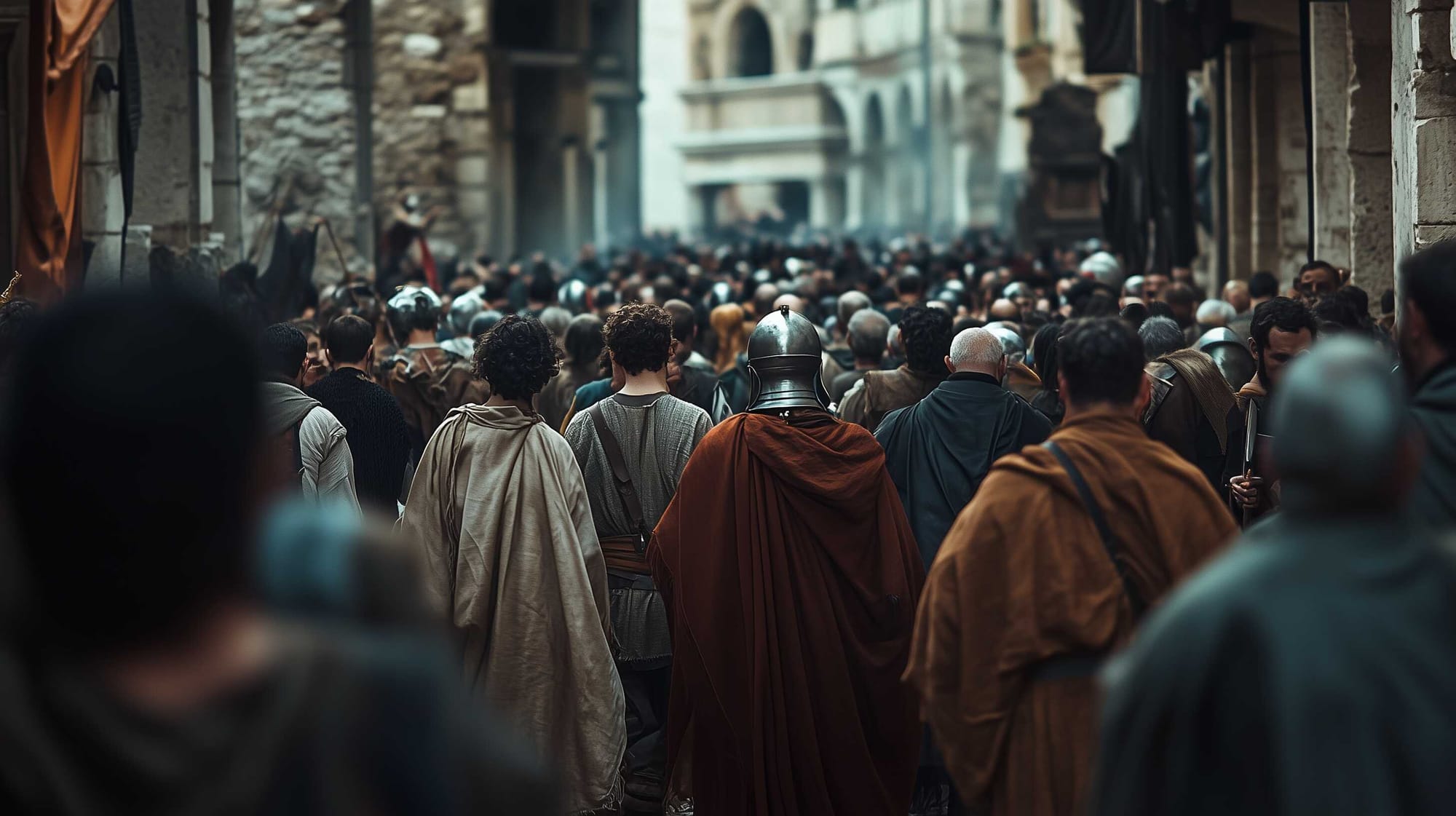
Soldiers from Egypt fought alongside Britons on the Rhine; merchants from Syria bartered with Spaniards in Carthage. But what made this empire of countless identities function so seamlessly—or, at times, fail spectacularly? The journey into Rome's cultural kaleidoscope uncovers a world more interconnected than we might imagine.
Beneath the grandeur of the Roman Forum and the towering aqueducts, lies a story of cultural convergence that shaped the world. Imagine walking through the bustling streets of ancient Rome, where the languages of Africa, Asia, and Europe intertwined, and the aromas of distant lands filled the air. What secrets did this unparalleled melting pot of cultures hold, and how did its diversity shape the empire's destiny? The answers reveal themselves in the unexpected corners of Roman life.
Unity in Diversity: The Governance That Shaped the Roman Empire
Rome’s earliest rulers were foreign kings, but a revolt in 509 B.C. marked the transition to the Roman Republic. Over the next five centuries, Rome evolved from a modest city-state in Italy into a vast empire. Between 450 B.C. and 45 B.C., it expanded through a series of wars, conquering Italy, Gaul (modern-day France), Spain, Africa, Greece, and the Balkans.
Later, Egypt and Britain were added to the empire's territories. Roman dominance over the Mediterranean world persisted until 476 A.D. The Roman Empire brought peace and prosperity to the diverse populations under its control. This stability was rooted in an administrative system that endured longer than any other in history. This remarkable longevity was closely tied to the innovative governance strategies used to manage the empire's diverse peoples.
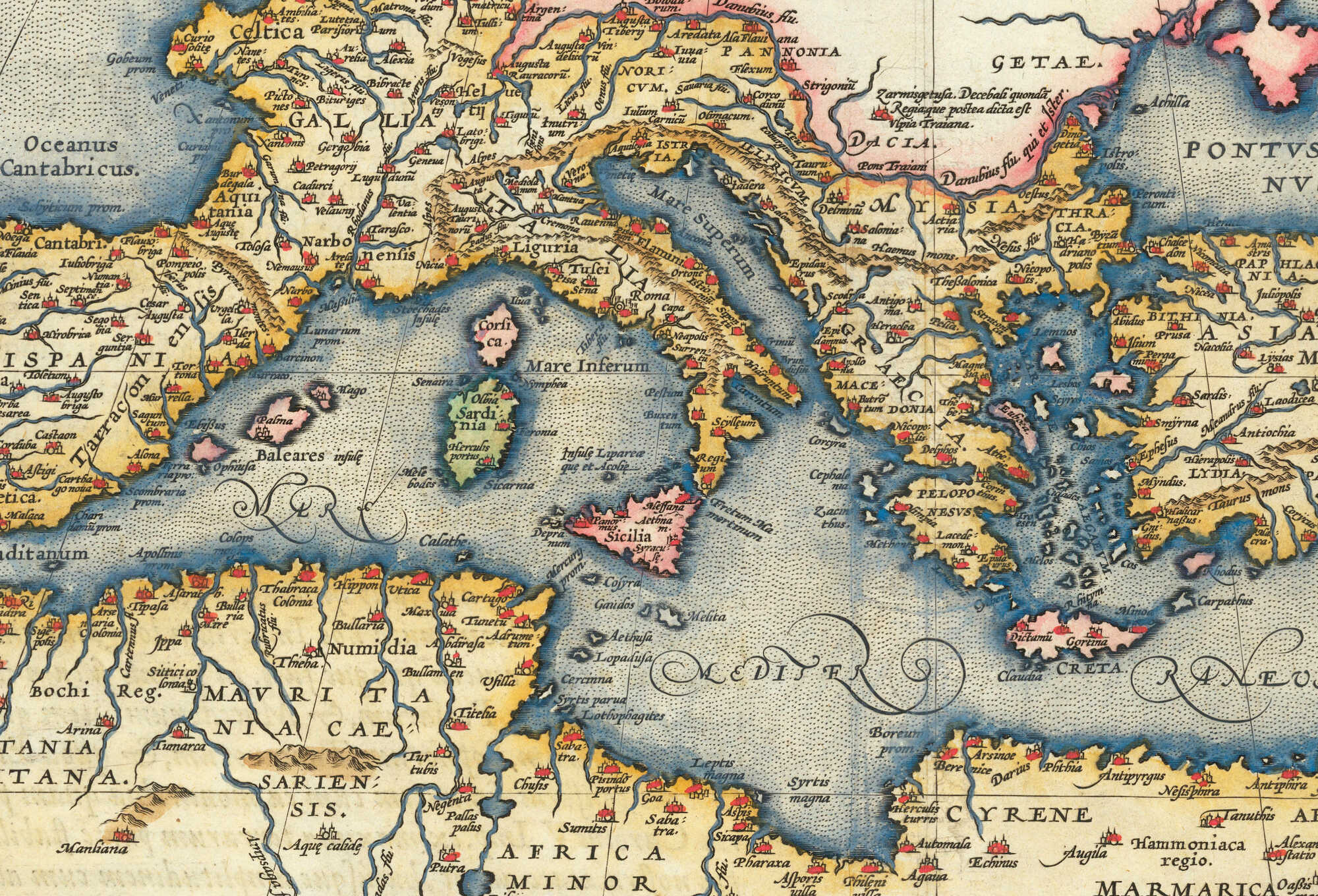
By the 2nd century A.D., the empire united approximately 100 million citizens and subjects in relative harmony.
A part of a map of
Abraham Ortelius from the Roman Empire at its peak, stretching from Iberia to Asia. Credits: Balkanique, Public domain
From Local Power to Global Empire: Rome’s Strategy of Diversity and Expansion
Rome’s rise to power was marked by a deliberate and measured strategy of expanding its borders and integrating neighboring communities through a hierarchy of privileges, showcasing statesmanship unmatched in the ancient world. The formation of the Roman Empire spanned approximately 400 years, from 450 B.C. to 50 B.C., and was characterized by a process of trial and error.
This system, rooted in adaptability and flexibility, allowed Rome to address immediate challenges effectively. The empire's growth relied heavily on the superiority of its military system compared to those of its adversaries. Expansion unfolded in three stages:
- Achieving dominance in Italy (450–250 B.C.)
- Extending control across the Mediterranean world (250–130 B.C.)
- Establishing itself as a global power with the conquests of Gaul and Britain (130–50 B.C.)
During its initial phase, Rome unified the diverse peoples of the Italian peninsula into a cohesive cultural and economic entity so appealing that Italians later fought a civil war to gain full Roman citizenship. This incremental approach to growth and the demand for Roman citizenship continued to define the empire’s subsequent stages of expansion.
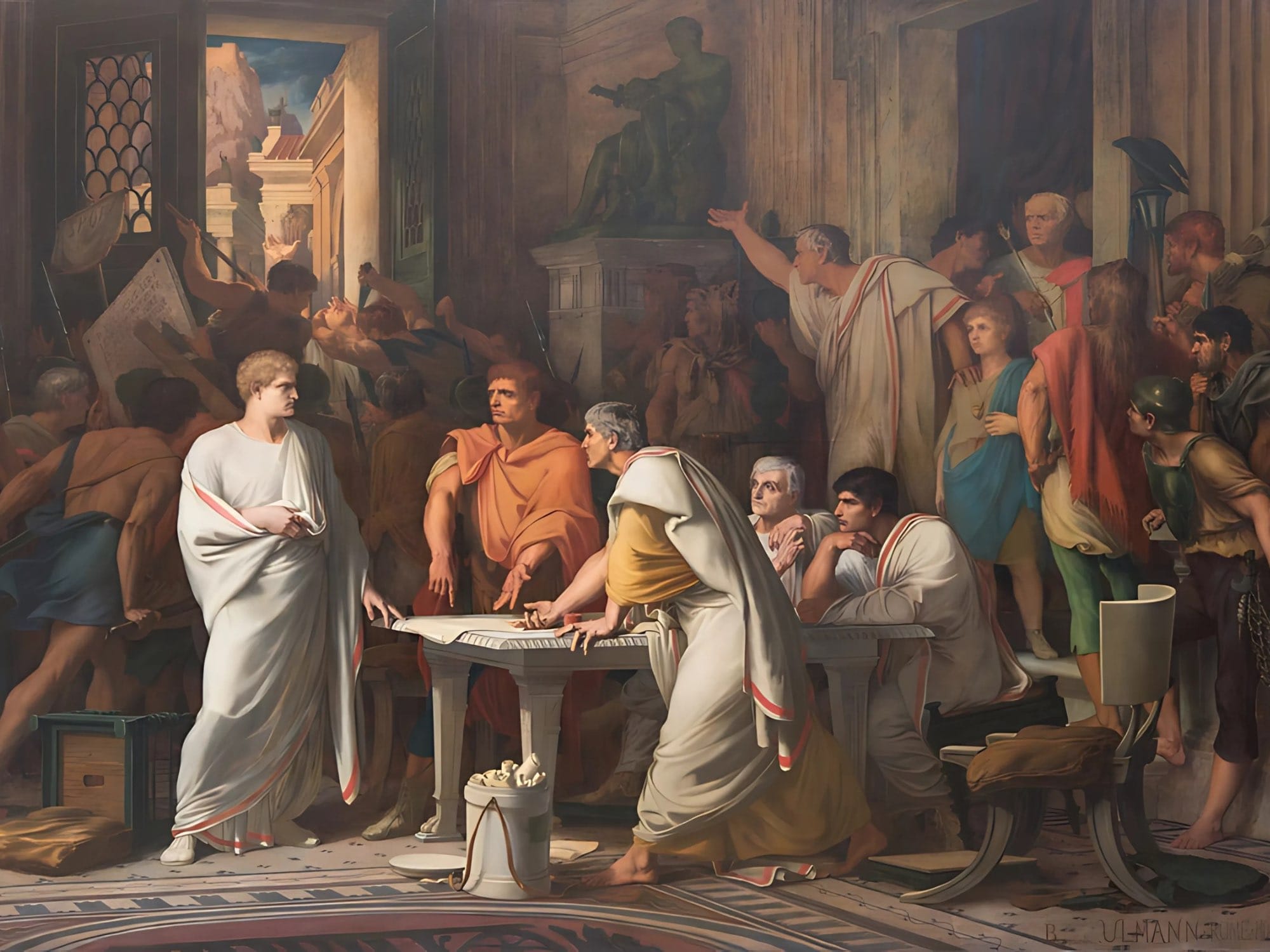
Rome’s Provincial System: A Model of Tolerance and Inclusion
The Romans developed governing systems similar to those of the Persian Empire. Both the Roman Republic and Empire divided their territories into provinces, comparable to the Persian satrapies. Roman provincial governors, exclusively Roman citizens, held authority, while local self-governance was allowed, akin to the Persian model.
This strategy helped align the elites of conquered regions with the central Roman government. Rome’s tolerance extended to local customs and religious practices, provided taxes and military contributions were met. Communities were free to maintain traditions unless they posed a direct threat to Rome, such as the perceived sedition of early Christians who refused to participate in the imperial cult.
This governance system fostered a vast, unified empire. By the 1st and 2nd centuries A.D., Rome was unparalleled in power, surrounded only by barbarians and the remains of the Persian Empire. Citizens of the Roman Empire enjoyed freedom of movement, and local municipalities operated with minimal interference from central authority.
However, Rome differed from Persia in key ways that bolstered its longevity. Three practices were crucial to its stability and integration of subject peoples: the strength of the Roman army, the promotion of urban development in previously rural regions, and the full inclusion of conquered peoples as Roman citizens.

Together, these elements ensured the endurance of the Roman system for over nine centuries.
The SPQR logo, symbolising the Roman Empire’s lasting legacy. Credits: Heinrich Stürzl, CC BY-SA 4.0
Forged in Battle: How the Roman Army Shaped a Diverse Empire
The integration of subject peoples into Roman society began with the army, evolving through two main phases. The first phase focused on incorporating Italians into the army from 450 B.C. to 50 B.C., while the second phase involved recruiting individuals from the provinces into the imperial army after 50 B.C.
Italian Romanization began with military service, where Latin was adopted as the army's common language, eventually replacing the native tongues of the Italian peoples. Italians were reorganized to fight in legions, the standard Roman military unit, abandoning their traditional combat styles. Fighting alongside Romans during the conquest of the Mediterranean, Italians received material rewards, fostering a desire for the privileges of Roman citizenship.
However, tensions arose due to Rome's slow extension of citizenship. This culminated in the Social War (91-88 B.C.), a brutal conflict where Italian cities revolted, protesting Rome’s reluctance to grant citizenship and the exploitation of their communities. Italians, well-versed in Roman military techniques, waged a fierce war. Recognizing the gravity of the issue, Rome granted citizenship to loyal Italian communities in 90 B.C., quelling the revolt and securing the manpower needed to defeat the rebels.
This led to the eventual granting of citizenship to all Italians.
The Roman army also played a critical role in Romanizing provincial peoples. Under Augustus, non-Italians were recruited as auxiliary troops to support Roman legions as skirmishers, missile troops, and cavalry. Latin was the language of command, exposing recruits to Roman culture. After 25 years of service, auxiliaries and their families were granted Roman citizenship, further embedding Roman influence across the empire.
Romanization Through Urbanization: How Cities and Citizenship Strengthened an Empire
The Roman army was unmatched in its time, playing a critical role in securing the empire's frontiers and enabling the spread of Romanization. This process included the growth of urban centers and the extension of Roman citizenship to subject peoples. Romanization thrived most effectively in provinces with a Latin-speaking rural population, achieved through the establishment of colonies that became cities and towns in conquered regions.
In the early phases of expansion in Italy and later during the imperial period, Rome founded Latin-speaking colonies, often by settling army veterans in these areas. Between 50 B.C. and A.D. 14, approximately 80 such colonies were established in regions like Spain and Africa. These settlements fostered self-governing communities that appeared to have a degree of autonomy while remaining loyal to Roman rule.
Urbanization also encouraged provincial elites to recognize the advantages of Roman citizenship, particularly in trade and political influence. As a result, urban districts with well-organized cities or towns became the backbone of Roman provincial administration, where citizenship became widespread among the upper and middle classes in these urbanized areas.
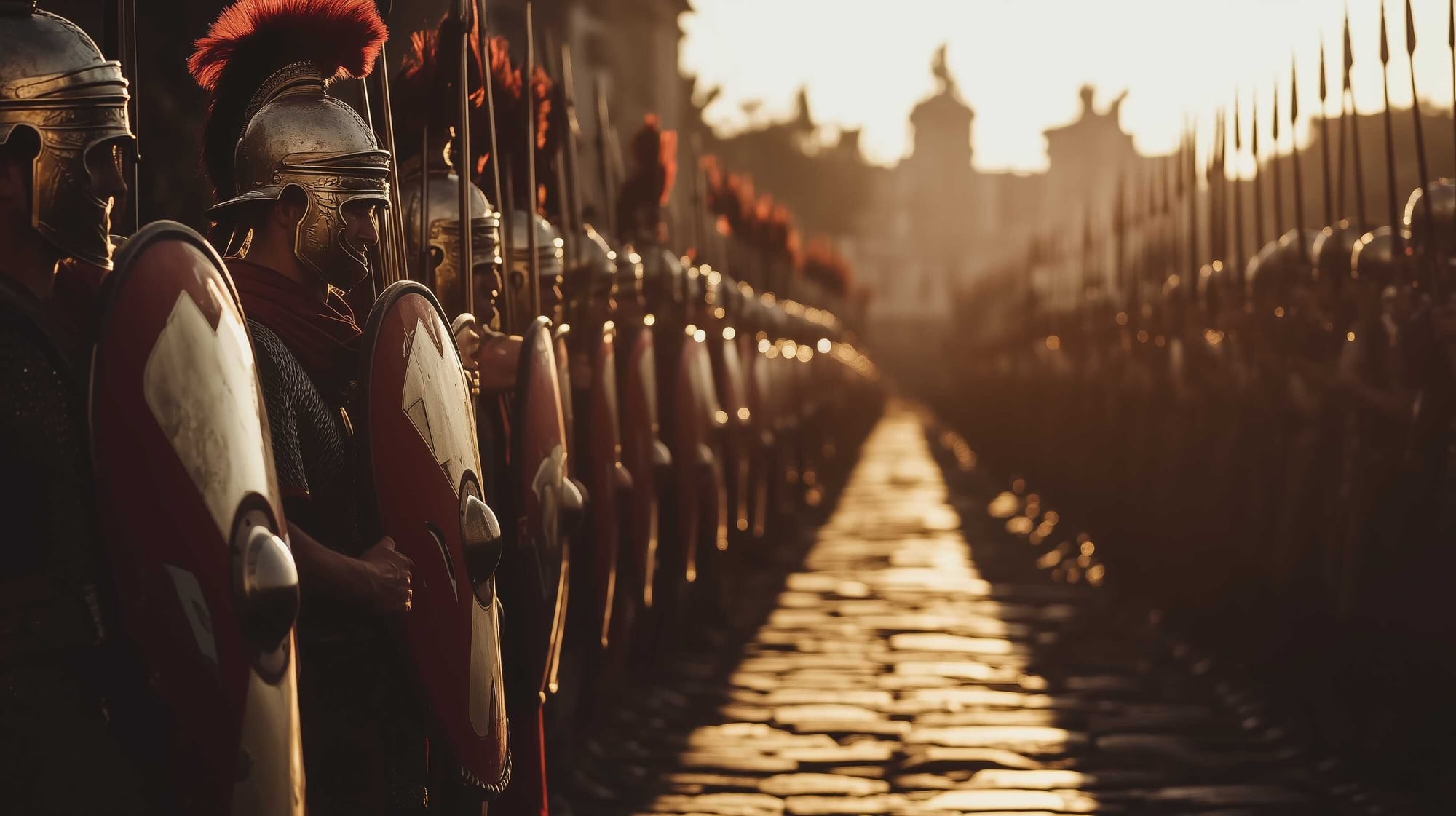
Rome’s Inclusive Empire: The Evolution of Citizenship Across Diverse Peoples
Rome’s practices of inclusion were extraordinary in the ancient world. King Philip V of Macedon, who fought against Rome, marveled at how freely the Romans granted citizenship to those who were not ethnically Roman. This inclusive approach culminated in 212 A.D., when all free inhabitants of the empire were granted Roman citizenship.
The policy of steadily extending citizenship was a defining feature throughout both the Republic and the Empire. Unlike other ancient city-states that were exclusive in membership, Rome transcended this model, creating a vast civic community comprising millions of people from diverse backgrounds spread across a vast territory.
This inclusivity was rooted in Rome’s unique practice of granting citizenship to individuals from other cities, a process that began in the early Republic and continued during the empire. Roman citizenship was expanded gradually, avoiding any destabilizing influx of newcomers. Citizenship during the Republic existed on a three-tiered system:
- Full Roman citizens (those born to Roman parents in Rome or Roman colonies)
- Partial Roman citizens (who held private rights and public duties but could not vote or hold office, including Latin citizens who had specific rights such as intermarriage with Romans and the ability to become full citizens by relocating to Rome)
- Italian allies (from cities with treaties of alliance)
Over time, allied cities and individuals could progress through these statuses, ultimately earning full citizenship. This hierarchy persisted into the imperial era, with provincial cities first gaining allied status, then partial citizenship, and eventually full citizenship.

Individuals could also attain citizenship through specific avenues, such as serving in the auxiliary units of the Roman army.
A possible representation of Roman auxiliaries (Auxilia) in training. Illustration: Midjourney
Exceptional acts of valor in battle might earn an individual citizenship from a Roman general, while the Senate or emperor could also confer citizenship on those who rendered outstanding service to the state. This structured and progressive system of inclusion helped sustain Rome’s cohesive and expansive empire.
From Resistance to Integration: How Citizenship Unified Rome’s Diverse Empire
The Gracchi brothers spearheaded initiatives between 133 B.C. and 121 B.C. aimed at reducing the dominance of the traditional republican government and expanding Roman citizenship to all Italians. However, the failure of these programs caused significant resentment among Italian allies, culminating in the Social War three decades later.
This civil war (91-88 B.C.) arose from the reluctance of conservative factions in the Roman Senate to grant citizenship to Italians. Initially successful, the revolt ultimately led to Roman citizenship being granted to all Italians. This outcome not only unified Italy but also laid the groundwork for the cultural assimilation of Western Europe into Roman values.
Roman citizenship offered considerable benefits, which often outweighed the cost of losing ethnic identity, especially for elites within different ethnic groups across Italy and the Roman Empire. Subjects sought Roman citizenship and often saw delays in its granting process as a greater grievance than the loss of their unique cultural identity. This pattern extended to the provinces of the empire, where individuals provided service—primarily military—to earn the rights and privileges of full Roman citizenship.
Ethnic identity could be preserved, provided subjects fulfilled Rome’s essential requirements of paying taxes and military service, which outweighed cultural markers like clothing styles. The expansion of citizenship also benefited Rome, fostering loyalty among diverse groups with minimal cost. Although all Roman citizens technically had voting rights, only those physically present in Rome could cast votes, meaning most citizens did not directly influence policy.
Moreover, incorporating new citizens enriched Rome’s administrative and military systems, ensuring stability and security for the vast empire. Over time, the traditional Roman nobility could not supply enough talent to govern effectively, prompting the inclusion of individuals from Italy and eventually the provinces.

This gradual process began under Augustus, who relied on talent from the Italian peninsula, and continued with provincial citizens rising to leadership roles. For instance, Vespasian, of Italian descent, became emperor in 69 A.D., followed by Trajan from Spain in 98 A.D., Septimius Severus from Africa in 193 A.D., and Diocletian from the Balkans around 290 A.D. This integration of provincial talent allowed Rome to confront significant external challenges between 100 B.C. and 300 A.D., securing the empire’s longevity.
From Chains to Citizenship: Rome’s Inclusive Approach to Freed Slaves
A distinctive aspect of Roman citizenship was its treatment of former slaves. Slaves in Rome came from various defeated peoples, representing a range of ethnic backgrounds. What set Rome apart was its established policy of granting citizenship to freed slaves who were emancipated through the proper legal formalities in the presence of a Roman magistrate or those who served in the military during emergencies.

While freed slaves held a second-class citizenship during their lifetime, their children were entitled to full Roman citizenship without any stigma attached.
A possible representation of a Roman slave teaching his kid about the value of becoming a Roman citizen in his adult life. Illustration: Midjourney
Rome’s policy of granting citizenship to former slaves was pragmatic rather than purely altruistic. Freed slaves remained bound to their former owners as clients, expected to support them through voting and other means. This patron-client relationship benefited both the former owners and the emancipated individuals.
Additionally, granting citizenship to slaves who served Rome during times of crisis strengthened the empire’s defenses while offering the freed individuals a path to legal and social inclusion. This reciprocal arrangement ensured mutual benefit for Rome and its freed populace. (Diversity and effectiveness in the Roman and Persian Empires, by Daniel J. Svyantek, Kevin T. Mahoney, Linda L. Brown. The International Journal of Organizational Analysis)
Embracing Diversity: The Vast and Inclusive Reach of the Roman Empire
Peter Heather, in his work, “Diversity and the Roman Empire” presents an interesting analysis from the early to the later Empire, saying that at first glance, few political entities in history appear as diverse as the Roman Empire. Spanning western Eurasia, it was the longest-lasting empire in the region, maintaining much of its full extent for over 400 years, and in most areas, aside from Britain, for more than half a millennium.
The empire's vast reach stretched from Hadrian’s Wall in the north to the Euphrates River in the east, encompassing an extraordinary variety of geographical, economic, political, and cultural contexts. Initially, the number of actual "Romans" was quite small—a privileged group primarily concentrated in central and southern Italy, enjoying the exclusive rights of citizenship. However, during the early imperial period, the immense diversity of peoples within the empire was not only acknowledged but often formally recognized and sanctioned by law.
Unity in Diversity: How the Roman Empire Thrived Across Cultures and Traditions
We can clearly recognise that the Roman Empire was a remarkable mosaic of geographical, cultural, and political diversity. It stretched over vast distances that, given the transportation limitations of antiquity, made its actual size feel ten to twenty times larger than what maps suggested.
Managing this vast and varied territory posed colossal challenges, especially given the Empire's limited bureaucratic infrastructure. For much of its early history, it relied on a mere 250 senior administrators to govern its enormous population.
The Empire’s success in uniting its diverse peoples lay in its adaptive and pragmatic governance. In the Mediterranean, where local city-states had long traditions of autonomy, Rome generally preserved these systems, granting privileges of self-governance in exchange for loyalty and taxes. This respect for existing structures extended to other regions, such as northern Europe, where local elites and socio-political systems were often retained under Roman oversight.
Legally, too, the Empire showcased remarkable flexibility. Local laws and citizenship patterns, particularly those of Greek city-states, were largely left intact, ensuring continuity for the elites who relied on secure systems of land tenure and inheritance. Egypt, for example, retained its local legal system for over three centuries as a Roman province, a proff to the Empire's respect for pre-existing norms.
Cultural diversity was another hallmark of Roman rule. The Empire generally adopted a laissez-faire attitude toward the traditions of its subjects, especially among the vast peasant population, who continued to speak a multitude of languages, including Punic, Celtic, and Coptic. Greek cultural influence, initially viewed with suspicion, was later embraced by the Roman elite, leading to the development of a Greco-Roman hybrid culture that influenced language, philosophy, science, and art.
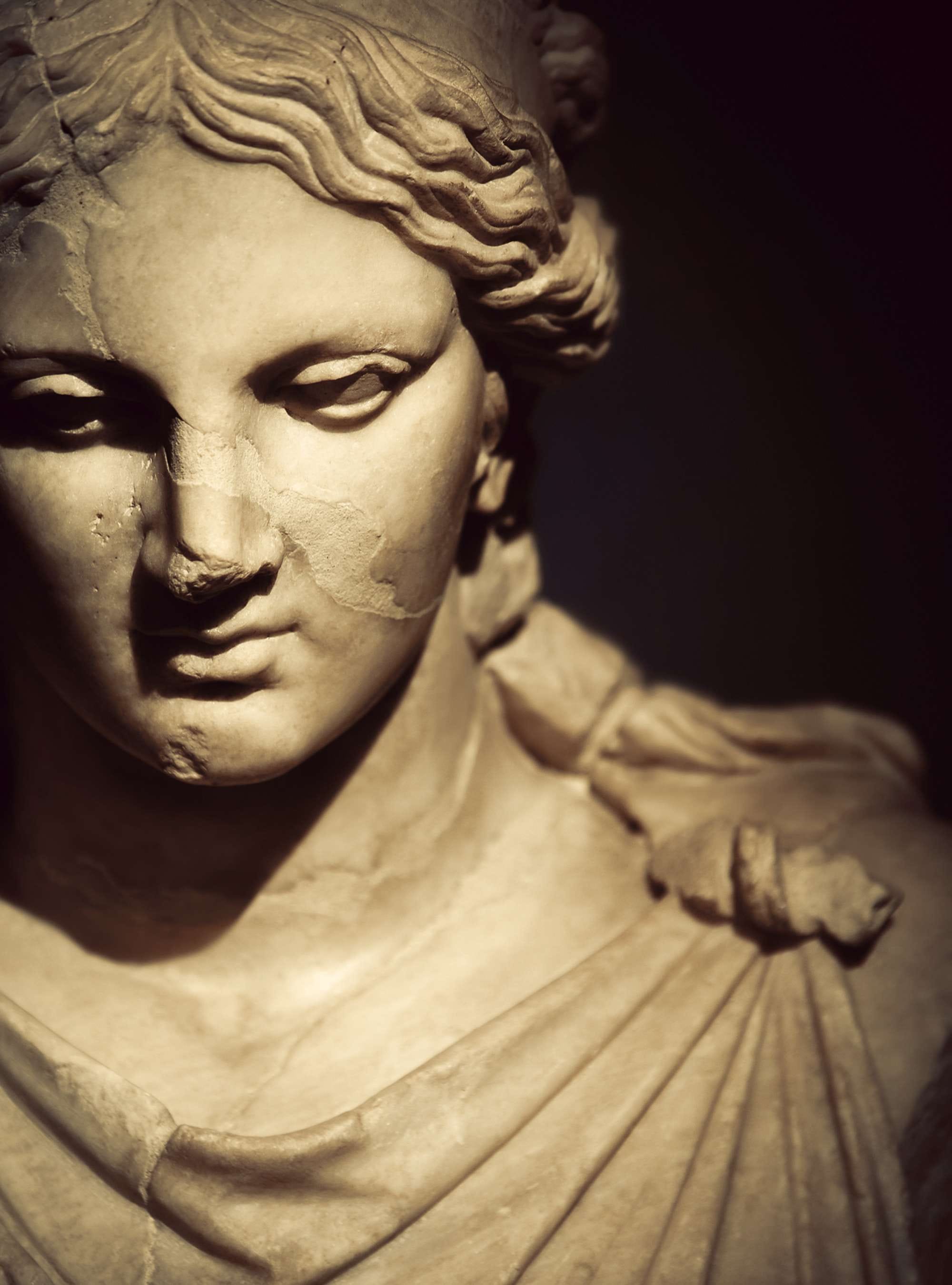
Religious practices reflected this same diversity. Although Rome suppressed cults involving human sacrifice and occasionally persecuted practices deemed "superstitio," it largely tolerated religious plurality. Local gods were often equated with Roman deities, facilitating their acceptance into the broader religious framework. Even monotheistic groups, such as the Jews, were granted accommodations that allowed them to maintain their distinct practices.
In its early phases, the Roman Empire functioned as a hegemonic yet underdeveloped superstate. Its vast scale and limited resources necessitated a high degree of local tolerance. This diversity, far from being merely a consequence of the Empire’s size, was often a deliberate policy, enabling the inclusion of varied peoples and traditions under one imperial umbrella.
However, as external pressures grew and the Empire evolved, these early practices of inclusivity and diversity faced significant challenges, leading to a gradual transformation in the nature of Roman governance.
The Roman Empire’s Self-Romanization: From Diversity to Uniformity
As a conquest-driven state, the Empire fundamentally shaped its internal dynamics through the advantages it conferred upon Roman citizens. While initially diverse in its population and governance, the Empire gradually transformed into a more uniform entity as provincial elites sought to integrate into the Roman framework.
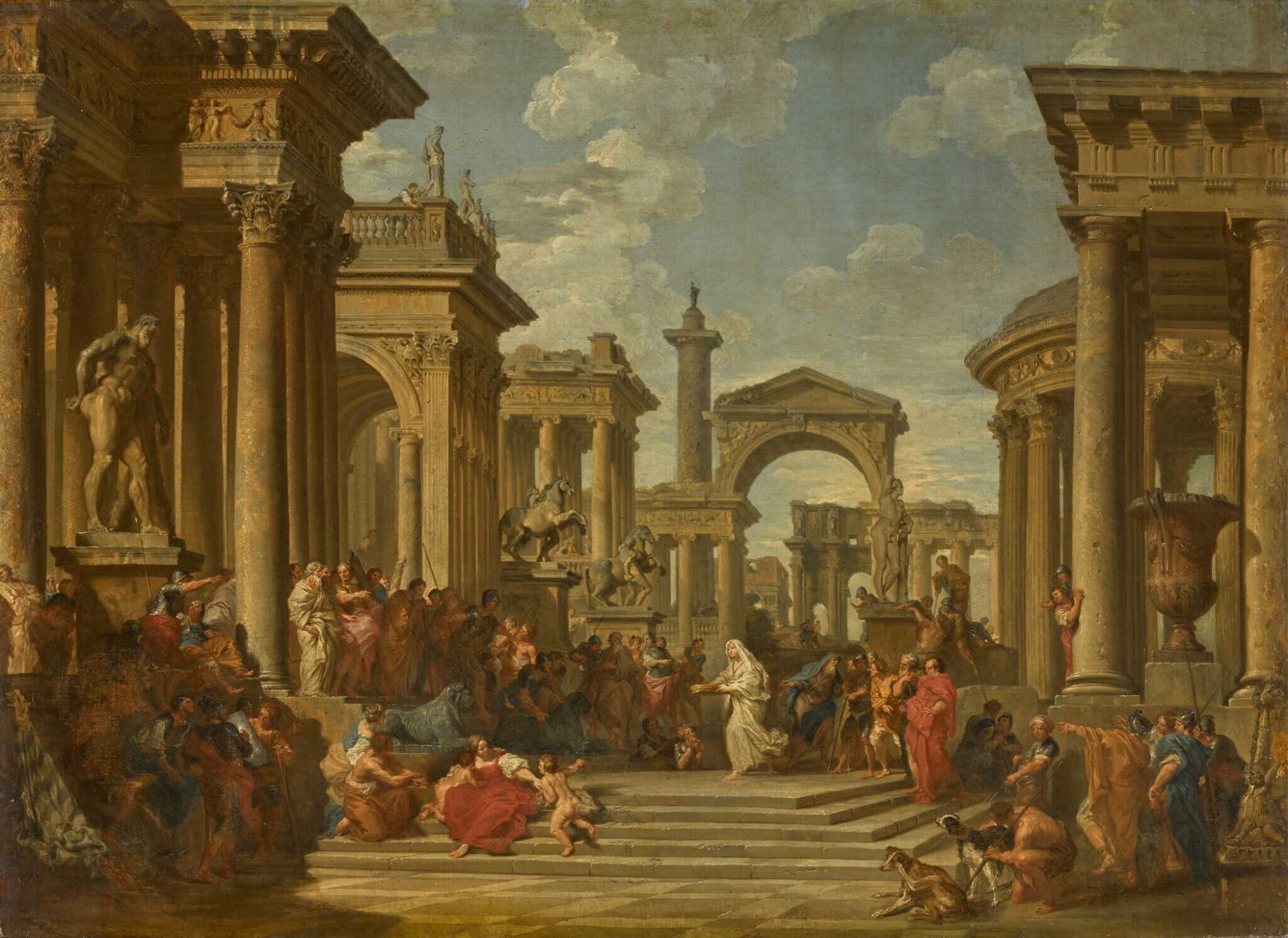
This process, often described as "self-Romanization," was not merely imposed from above but was actively pursued by local communities and elites.
A capriccio of the Roman forum with Tuccia, the Vestal Virgin, painting by Giovanni Paolo Panini. Credits: Sotheby’s, Public domain
The Empire's conquests initially created a stark divide between Roman citizens, who enjoyed immense social and legal privileges, and the non-Roman provincial elites, who found themselves as second-class participants within the imperial system. In response, ambitious provincials sought Roman citizenship and cultural integration through participation in imperial structures like the imperial cult.
This pursuit catalyzed significant shifts in local governance, with the adoption of uniform municipal constitutions across the Empire. By the third century CE, these city councils had replaced diverse local political systems, creating a standardized framework for managing rural territories under Roman oversight.
The Constitutio Antoniniana of 212 CE marked a turning point by granting Roman citizenship to all free inhabitants of the Empire. This universal citizenship reinforced the spread of Roman legal structures, which became the dominant legal system throughout the Empire.
The benefits of Roman law, particularly its ability to protect and regulate landed wealth, made it a preferred choice among elites. The rescript system, which allowed citizens to petition the Emperor for legal clarifications, further entrenched Roman legal dominance by the third century CE.
Culturally, the early Roman Empire was characterized by significant diversity, particularly in language and local traditions. Over time, however, elite cultural practices became more uniform. A standard education in Latin or Greek, depending on the region, became a hallmark of elite status, creating a shared cultural identity among provincial landowning classes. This uniformity extended to architecture, food, and lifestyle, eroding the distinctiveness of provincial elites.
This self-Romanization process also had political consequences. By fostering a sense of shared identity and granting local elites the tools to govern themselves, Rome mitigated the risk of rebellion. Early revolts, such as those led by Boudicca and Arminius, were largely quelled by the first century CE as provincial elites increasingly identified with Roman values and governance.
Interestingly, the push for Romanization often came from the provinces themselves.
Communities would fund the construction of Roman-style public buildings, such as temples and theatres, to signal their cultural alignment with Rome. These efforts were frequently followed by petitions to provincial governors and the Emperor for formal recognition and citizenship. This grassroots initiative highlights the voluntary nature of much of the Romanization process, driven by the tangible benefits of Roman citizenship and legal protections.
However, the success of self-Romanization also introduced new pressures. The growing uniformity among elites reduced the Empire’s original diversity and laid the groundwork for internal cultural shifts that would influence the later stages of Roman history. While these changes strengthened the Empire in many ways, they also set the stage for challenges that arose as the Empire faced external pressures and evolved into its later form.
The Decline of Diversity: Taxation, Bureaucracy, and Christianity in the Late Roman Empire
By 250 CE, significant transformations in the Roman Empire began to reshape its internal dynamics, with profound impacts on its diversity and structure. The pressures of sustaining a growing military, especially in the face of external threats from Persia and northern confederations, led the central state to confiscate local revenues.
City councils, once vibrant centers of local governance, became primarily tax collection entities. This shift diminished the appeal of local officeholding for provincial elites, eroding long-standing traditions of civic generosity and investment. Simultaneously, the size of the Roman bureaucracy expanded dramatically to manage the Empire's increasing tax and administrative burdens. Over 150 years, the number of senior administrators grew twentyfold, along with countless intermediary officials.
However, rather than simply becoming a repressive centralizing force, the bureaucracy offered new avenues for self-advancement. Former city councilors flocked to bureaucratic roles, drawn by the privileges and status these positions conferred. This process mirrored earlier patterns of self-Romanization, with local elites adapting imperial incentives for their benefit, preserving some level of local autonomy despite new regulations.

A more profound loss of diversity came with the rise of Christianity, beginning in earnest with Emperor Constantine in the mid-320s CE. Constantine’s conversion initiated a sweeping Christianization of the Empire, solidified by his successors. By 400 CE, the Empire had begun dismantling pagan temples, and professing Christianity became essential for career advancement in imperial structures.
The Christianization process deeply impacted the highly literate elite, narrowing the range of acceptable religious and cultural practices. While some pockets of paganism lingered, such as in the schools of Athens and Alexandria, they became increasingly isolated as the dominance of Christianity grew.
This transformation was not limited to the elite. Christianity introduced a new imperative: the spiritual salvation of every individual, including the peasantry. This marked a stark departure from earlier imperial policies, which largely ignored non-elite cultural practices as long as taxes were paid. By the fifth and sixth centuries, bishops and imperial agents actively sought to replace traditional rural religious practices with Christianized counterparts, often employing significant coercion.

Christianity thus extended the Empire’s top-down cultural constraints to the entire population, paving the way for the Christian dominance of post-Roman Europe. While some argue that Christianity gave emperors new levers of control over provincial elites, the patterns of self-Romanization and cultural assimilation had already set the stage for declining diversity.
However, Christianity’s emphasis on universal salvation authorized an unprecedented level of intervention in everyday life, embedding monolithic cultural norms across the Empire. This cultural shift, rooted in the Empire’s administrative structures, became a defining legacy for the medieval world, influencing the spread of Christianity and the centralized power of the Church in Europe. (Routledge International Handbook of Diversity Studies, Part II, Historical geographies of diversity: “Diversity and the Roman Empire”, by Peter Heather)


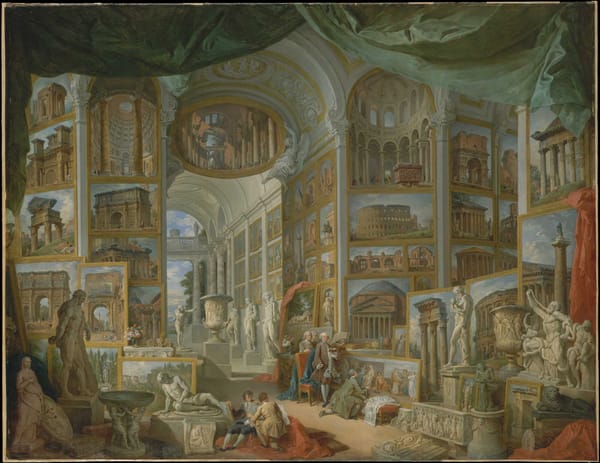
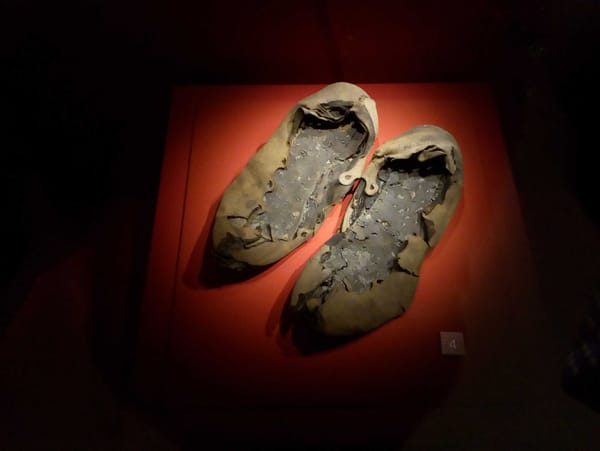
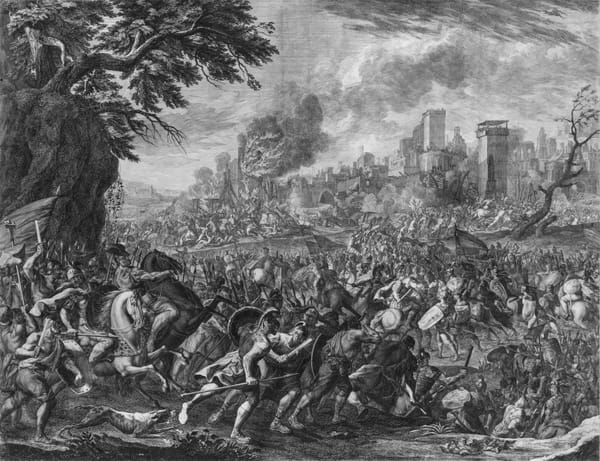
About the Roman Empire Times
See all the latest news for the Roman Empire, ancient Roman historical facts, anecdotes from Roman Times and stories from the Empire at romanempiretimes.com. Contact our newsroom to report an update or send your story, photos and videos. Follow RET on Google News, Flipboard and subscribe here to our daily email.
Follow the Roman Empire Times on social media: